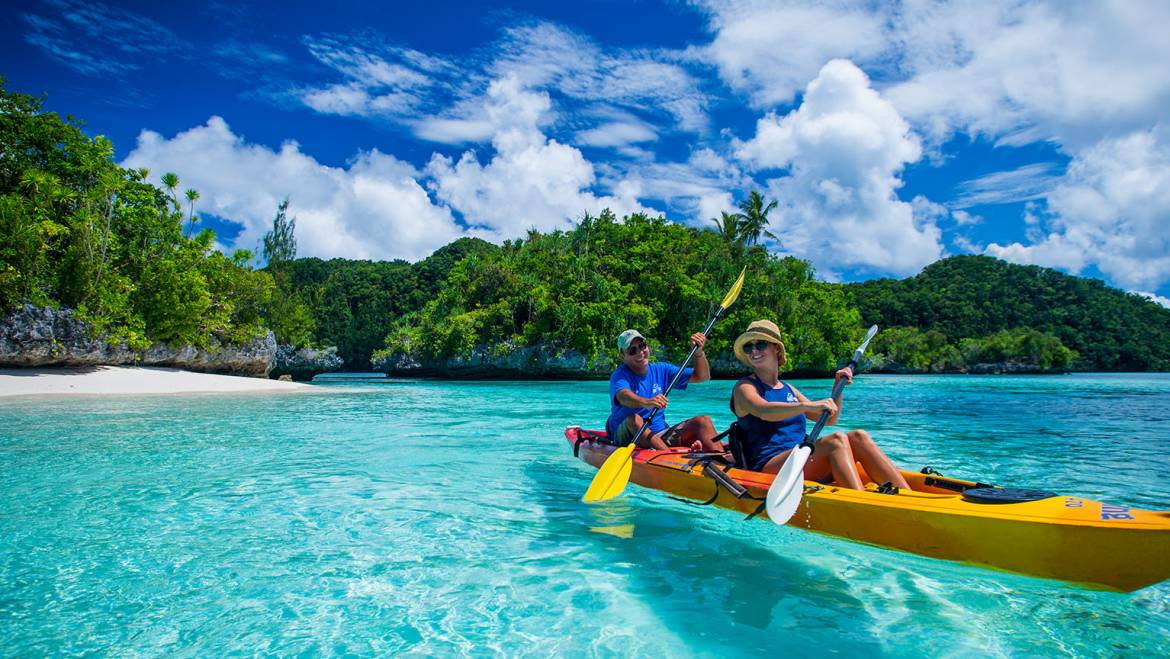Palau has a history of strong environment conservation. For example, Ngerukewid islands and the surrounding area are protected under the Ngerukewid Islands Wildlife Preserve, which was established in 1956.
While much of Palau remains free of environmental degradation, areas of concern include illegal dynamite fishing, inadequate solid waste disposal facilities in Koror and extensive sand and coral dredging in the Palau lagoon. As with other Pacific island nations, rising sea level presents a major environmental threat. However, according to the Emissions Database for Global Atmospheric Research average carbon dioxide emissions per person were 58 tonnes in 2018, the highest in the world and mostly from transport. Inundation of low-lying areas threatens coastal vegetation, agriculture, and an already insufficient water supply. Wastewater treatment is a problem, along with the handling of toxic waste from fertilizers and biocides.
Saltwater crocodiles are also indigenous to Palau and occur in varying numbers throughout the various mangroves and in parts of the rock islands. Although this species is generally considered extremely dangerous, there has only been one fatal human attack in Palau within modern history, and that was in the 1960s. In Palau, the largest crocodile measured 4.5 meters (14 ft 9 in).
The nation is also vulnerable to earthquakes, volcanic activity, and tropical storms. Palau already has a problem with inadequate water supply and limited agricultural areas to support its population.


Add Comment